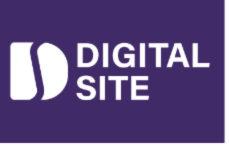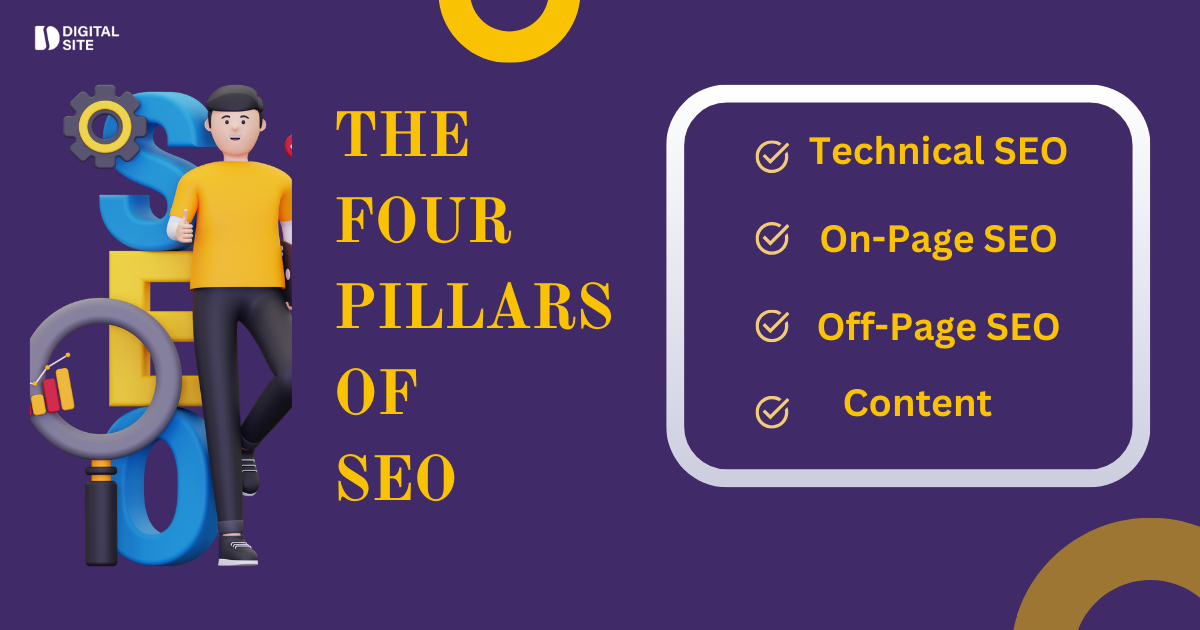In today’s digital landscape, Search Engine Optimization (SEO) is the backbone of online visibility. Whether you’re running a personal blog, an e-commerce site, or a large corporate platform, understanding SEO’s core components is crucial for driving organic traffic. The foundation of SEO can be summarized in four pillars: Technical SEO, Content, On-Page SEO, and Off-Page SEO. Let’s dive deep into each pillar to understand how they work together to elevate your website’s performance. Digital Site helps to improve your SEO knowledge and strategies.
1. Technical SEO
Technical SEO ensures that search engines can efficiently crawl, index, and understand your website. Without a solid technical foundation, even the best content can fail to rank. Here are the key elements of technical SEO:
- Website Speed: Fast-loading pages are critical for user experience and search engine rankings. Tools like Google PageSpeed Insights can help identify areas for improvement.
- Mobile-Friendliness: With mobile-first indexing, having a responsive design that works seamlessly on all devices is non-negotiable.
- Crawlability: Ensure search engine bots can easily navigate your site by submitting XML sitemaps and avoiding blocked resources in the robots.txt file.
- HTTPS Security: Secure your site with an SSL certificate to protect user data and build trust.
- Structured Data: Implement schema markup to help search engines understand your content better, enabling rich results like snippets and knowledge panels.
- Canonical Tags: Avoid duplicate content issues by using canonical tags to specify the preferred version of a page.
A strong technical SEO strategy lays the groundwork for all other SEO efforts, ensuring that your website is optimized for both users and search engines. Digital Site provides insights to optimize your website’s technical aspects effectively.
2. Content
Content is often called the “king” of SEO, and for good reason. Search engines prioritize high-quality, relevant, and engaging content that satisfies user intent. Here’s how to excel in this pillar:
- Keyword Research: Identify the terms your audience is searching for using tools like Google Keyword Planner, Ahrefs, or SEMrush. Focus on long-tail keywords for less competition and higher conversion rates.
- User Intent: Create content that matches the purpose behind a user’s search query—whether it’s informational, navigational, or transactional.
- Content Formats: Diversify your content with blogs, videos, infographics, podcasts, and downloadable resources to cater to different audience preferences.
- Evergreen Content: Produce content that remains relevant over time, such as how-to guides or comprehensive resources, to drive consistent traffic.
- Content Depth: Ensure your content provides detailed and valuable insights. Search engines reward comprehensive content that thoroughly answers user queries.
- Engagement: Encourage interaction with your content through compelling CTAs (Call to Actions), social sharing buttons, and comment sections.
Regularly updating and expanding your content not only keeps it fresh but also signals to search engines that your website is active and relevant.  Digital Site focuses on creating and updating quality content to enhance your online presence.
Digital Site focuses on creating and updating quality content to enhance your online presence.
3. On-Page SEO
On-page SEO focuses on optimizing individual web pages to rank higher and earn more relevant traffic. It involves refining the elements directly within your control. Here’s what to focus on:
- Title Tags: Write concise, keyword-rich titles that clearly describe the page’s content. Keep them under 60 characters to avoid truncation in search results.
- Meta Descriptions: Craft compelling meta descriptions to encourage click-throughs. Include primary keywords and maintain a length of 150-160 characters.
- Header Tags (H1, H2, H3): Use header tags to structure your content, making it easier for both users and search engines to understand.
- Keyword Placement: Naturally incorporate keywords into titles, headers, and throughout the body content. Avoid keyword stuffing.
- Internal Linking: Link to other pages on your website to improve navigation, distribute link equity, and keep users engaged longer.
- Image Optimization: Use descriptive file names, compress images for faster loading, and add alt text to improve accessibility and image search rankings.
- URL Structure: Keep URLs clean, descriptive, and keyword-rich. Avoid long, complex URLs with unnecessary parameters.
On-page SEO ensures that each page of your website is fully optimized for search engines and delivers a great user experience. Digital Site offers tips and tricks to master on-page SEO techniques.
4. Off-Page SEO
Off-page SEO is all about building your website’s authority and trustworthiness through external efforts. It extends beyond your website and involves activities that enhance your online reputation. Key strategies include:
- Backlink Building: Acquire high-quality backlinks from authoritative websites. Focus on relevance and quality over quantity to avoid penalties.
- Social Media Engagement: Promote your content on social platforms to increase visibility and drive traffic. Social signals can indirectly influence SEO by boosting content exposure.
- Brand Mentions: Encourage mentions of your brand across the web. Even unlinked mentions can help establish your authority.
- Guest Blogging: Write guest posts for reputable sites in your niche to earn backlinks and expand your reach.
- Influencer Outreach: Collaborate with influencers to amplify your content and build relationships within your industry.
- Online Directories and Citations: Ensure your business information is consistent across online directories like Google Business Profile, Yelp, and Bing Places.
Off-page SEO is a long-term effort that requires consistent effort and strategic planning. It’s about building relationships and establishing your website as a trusted source in your industry. Digital Site helps you navigate off-page SEO strategies for lasting results.
Why the 4 Pillars Work Together
The true power of SEO lies in the synergy of its four pillars. Here’s how they interconnect:
- Technical SEO + Content: A technically sound website ensures that search engines can index and rank your high-quality content.
- Content + On-Page SEO: Optimized content with targeted keywords and proper structure improves user engagement and search rankings.
- On-Page SEO + Off-Page SEO: Internal optimization combined with external authority-building efforts strengthens your website’s credibility.
- Off-Page SEO + Technical SEO: A technically optimized website with strong backlinks ensures better crawling, indexing, and ranking.
By integrating all four pillars, you create a robust SEO strategy that drives sustainable growth. Manisha Digital Site emphasizes the importance of combining all these pillars for optimal success.
Final Thoughts
Mastering the four pillars of SEO—Technical SEO, Content, On-Page SEO, and Off-Page SEO—is essential for achieving online success. Each pillar plays a unique role but works together to enhance your website’s visibility, authority, and user experience. SEO is a continuous process that requires ongoing learning, adaptation, and effort. By investing in these foundational elements, you’ll be well-equipped to navigate the ever-changing world of search engine optimization and achieve long-term results. Let Digital Site be your guide to mastering SEO and improving your digital footprint.

